









| Siberian Chipmunk (Tamias sibiricus (Laxmann, 1769)) |










|
|
Scientific name: Tamias sibiricus (Laxmann, 1769) Common name: Siberian Chipmunk French name: Écureuil de Corée, Tamia de Sibérie, Écureuil de Sibérie, Écureuil japonais, Rat de Corée. Family: Sciuridae Size: 18 to 25 cm long, of which one third is for the tail. The weight varies from 50 to 150 g depending of the period of the year. Biotope: Woodlands and forests with a preference for bushy locations. Food: Omnivorous: seeds, fruits, vegetables, insects and sometimes lizards and young birds. Longevity : 5 to 12 years. Geographic area: Northern Asia, from central Russia to China, to Korea and to the Japanese island of Hokkaido. You can observe, in Europe, animals escaped from captivity. |
Siberian Chipmunks have a brown grey coloured fur on the back depending on the origin. They show four pale longitudinal stripes and five dark stripes along the sides of the body. The tail is a pale brown colour, bordered on each side by a wide dark line ending with a thin white edge. They have large cheek pouches. The ears are small and round-tipped. Siberian Chipmunks are active during the day. They live in burrows. There are 2 litters of 4 to 5 young per year. Siberian Chipmunks you can see in Europe come from animals escaped from captivity. Siberian Chipmunks hibernate from October to April. |
| [To know more about the Siberian Chipmunk] [Next picture] [Top] |
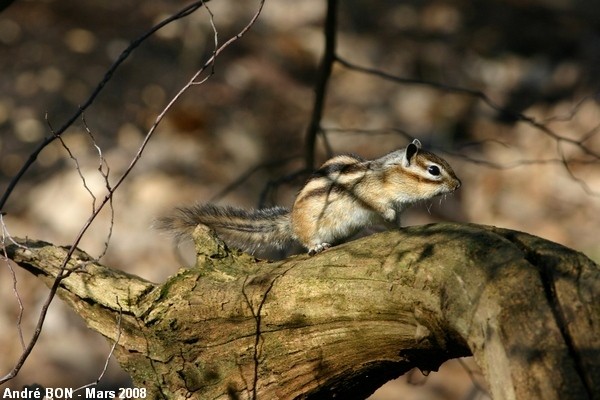
|
I had this Siberian Chipmunk right in the view finder when, suddenly, the sun shone thru a hole in the clouds to light the scene. Magical moment! |
| [To know more about the Siberian Chipmunk] [Next picture] [Previous picture] [Top] |
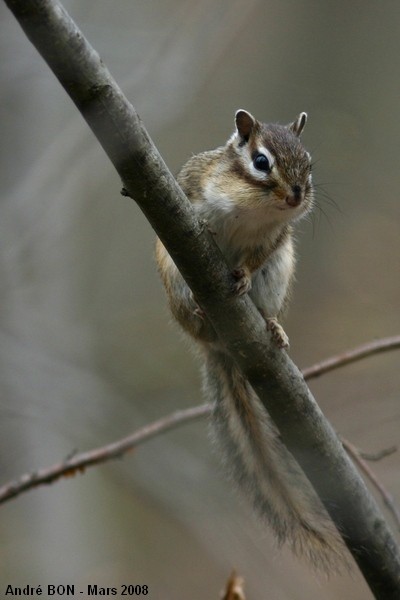
|
The Siberian Chipmunk is an excellent climber. |
| [To know more about the Siberian Chipmunk] [Next picture] [Previous picture] [Top] |
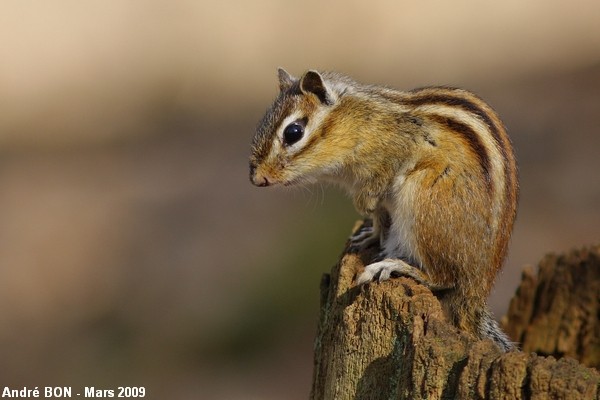
|
First observation after the hibernation period. |
| [To know more about the Siberian Chipmunk] [Next picture] [Previous picture] [Top] |
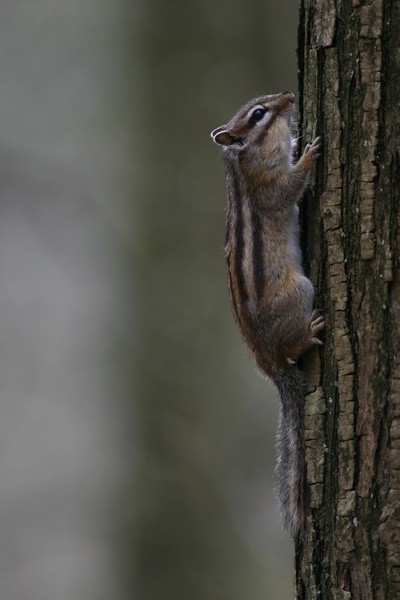
|
The colour of the Siberian Chipmunk's fur makes a good camouflage against trunks of trees. |
| [To know more about the Siberian Chipmunk] [Next picture] [Previous picture] [Top] |
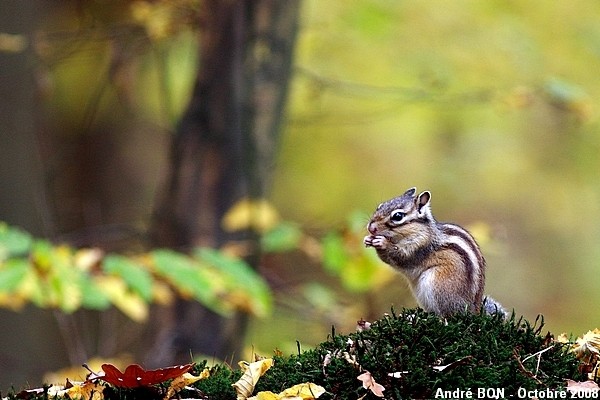
|
As they are used to seeing people walking around here, Siberian Chipmunks are easy to photograph. There is a possible confusion with Tamias striatus, but I have read that mainly Tamias sibiricus was freed from captivity in the Paris area. |
| [To know more about the Siberian Chipmunk] [Next picture] [Previous picture] [Top] |
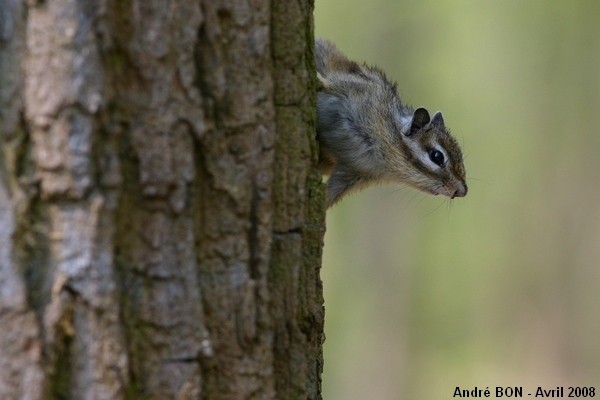
|
The high number of Siberian Chipmunks living in this forest corner allows us to play "hide-and-go-seek". |
| [To know more about the Siberian Chipmunk] [Next picture] [Previous picture] [Top] |
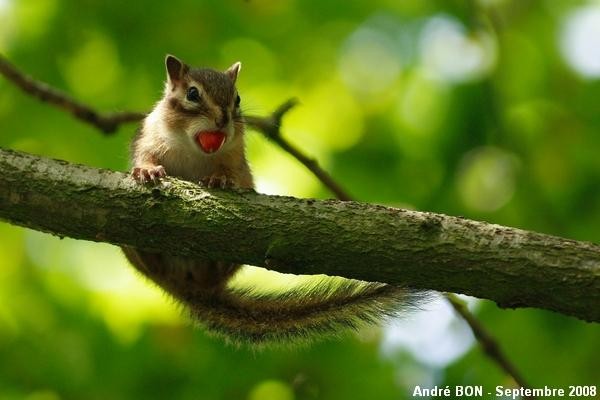
|
Siberian Chipmunks, which stayed very shy during summer, now become very active in autumn before hibernation. |
| [To know more about the Siberian Chipmunk] [Next picture] [Previous picture] [Top] |
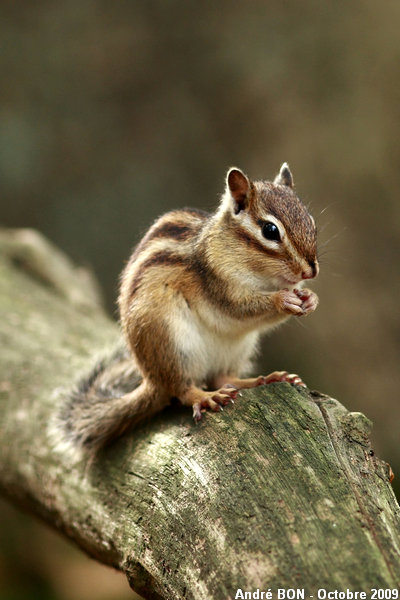
|
Siberian Chipmunks, standing on their hind legs and holding food in their fore legs, make photogenic subjects. |
| [To know more about the Siberian Chipmunk] [Next picture] [Previous picture] [Top] |

|
Year after year I still observe Korean Squirrels in this little corner of the forest but they do not extend their territory to the surroundings. |
| [To know more about the Siberian Chipmunk] [Previous picture] [Top] |
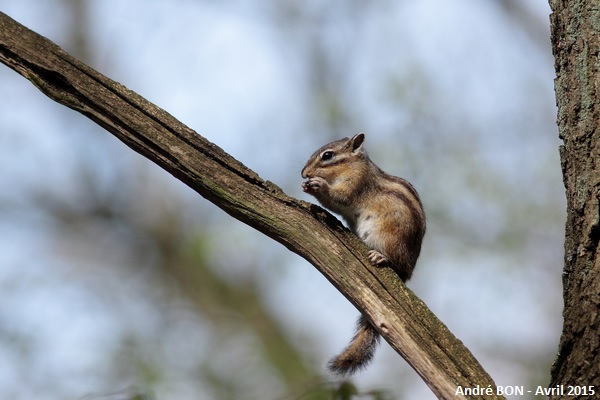
|
Short lunch break without paying any attention to the paparazzis. |